The world’s largest polar-aligned telescope is this radio telescope in Green Bank, West Virginia. The telescope’s axis is aimed at Polaris (The North Pole, or area below the North Star) so that it can follow the sky as the Earth spins. In this photograph, we are able to view the 140-foot (43-meter) telescope from the south and lit against the dust-shrouded heart of our Milky Way galaxy.
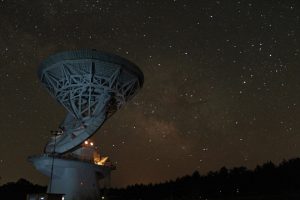
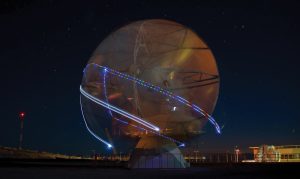
Long exposure photograph of lights placed on ALMA antenna
Sometimes, engineers at the ALMA Operations Support Facility have a little harmless fun with their antennas. On this night, a small light was attached to a North American antenna as its drives were being tested while workers took a long-exposure shot of its movement.
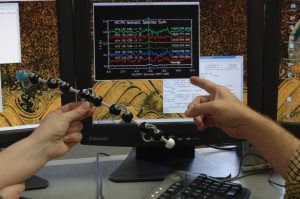
A Model Molecule and its Spectrum
A model molecule (shown here 500 million times larger than life) spins in a very specific manner, making radio waves as it does. Molecules transmit a unique set of wavelengths that can be detected by radio telescopes. On the screen are the signals we receive when that molecule spins in space.

What are Emission Lines?
Inside a spectrometer, a beam of white light (typical incandescent light bulb, sunlight, etc.) is broken into its actual wavelengths, what we call colors. Radio waves, if we could see them like this, would glow way off the chart to the left. Infrared light would be glowing next to the red, between radio and white visible light.
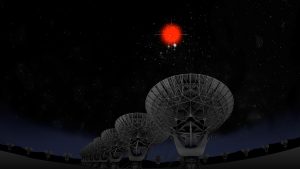
Precise Location, Distance Provide Breakthrough in Study of Fast Radio Bursts
In January 2017, for the first time, astronomers pinpointed the location in the sky of a Fast Radio Burst (FRB), allowing them to determine the distance and home galaxy of one of these mysterious pulses of radio waves. The new information rules out several suggested explanations for the source of FRBs.
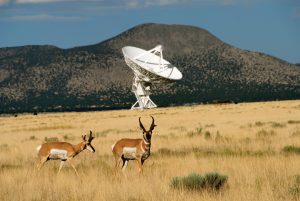
Pronghorn Antelope Wander at the VLA
Aside from the engineers, astronomers, and visitors frequenting the Very Large Array in New Mexico, pronghorn antelope is a common sight to see at the VLA.





